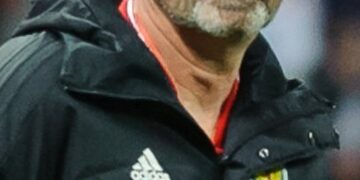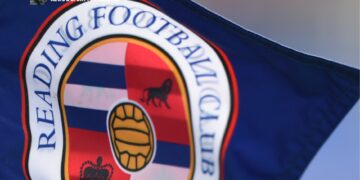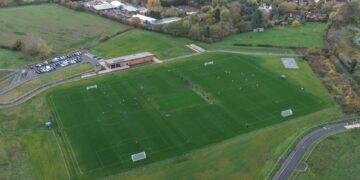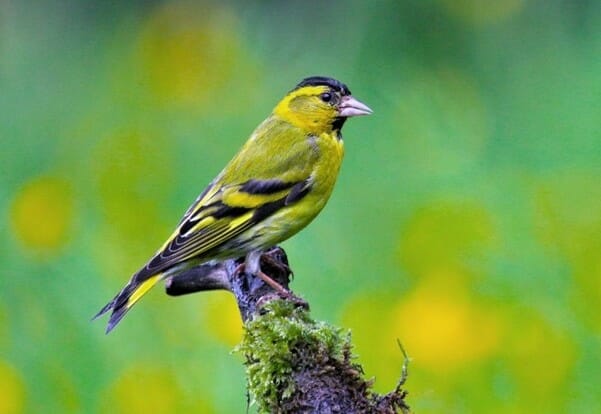On 11 April, in a change to our advertised programme, we had an absolutely fascinating talk by Katrina Van Gouw entitled Art to Zoology, a story of Evolution, tracing her personal evolution from artist to scientist and presented with infectious enthusiasm and humour.
In 1987, Katrina was studying fine art and her speciality was drawing birds. Realising that an understanding of what lies beneath the surface would enhance her art she looked for a dead bird that she could study.
While walking on a beach in South Devon she found the body of a dead female mallard in perfect condition and named it Amy.
She drew Amy layer by layer, feathers, muscles and then bones. She began to be fascinated by bird anatomy and decided to produce a book for artists and enthusiasts showing how birds work in terms of anatomy, how they are able to dive, swim, climb trees and drill holes.
What she didn’t want to produce was an academic tome full of labelled diagrams.
The result was The Unfeathered Bird described by a reviewer as “the best book ever to be inspired by a dead duck”.
Given the nature of the book it was difficult to find a publisher but eventually Princeton University Press agreed to publish it. The work took an astonishing 25 years to complete, astonishing that is until you find out what was involved.
Bodies of dead birds in various states of decomposition were donated (never bought) by animal hospitals, the RSPB and bird parks, or were found as road kill or washed up on beaches. Skeletons then had to be painstakingly reassembled, mostly by her husband, and then drawn in pencil.
The reconstructed skeletons revealed fascinating structures, such as the sticky tongue with which green woodpeckers collect ants which is so long that when not in use it is pulled up the right nostril into a channel in the skull.
Owls have asymmetrical ears on their facial disc which gives them directional hearing enabling them to find prey in the dark.
Herons, Bitterns and Egrets have narrow bodies enabling them to creep through reeds without rustling them, and a kink in the neck vertebrae allowing them to thrust forward at great speed to spear a fish.
After producing the book, for which she not only produced the drawings and text but designed the whole layout, she intended to go back to art but found she had moved on.
Her book had generated huge enthusiasm among a wide range of readers and, unexpectedly, among paleontologists.
As a result, she updated the book to include the origin and evolution of birds.
Her interest was caught particularly by a group of “birds” called Pelagornithids, around twice the size of an albatross and having “pseudo teeth” which were so fragile they could not have been used to catch fish.
So fascinated did Katrina become that she crowd-funded the money to embark on a PhD at Cambridge University into these birds, looking at what their structure might have been, did they fly, how did they live and what caused their extinction after 55 million years.
So, her own evolution from artist to scientist is now complete.
On Sunday, April 16, we set off in a minibus from Earley to go to Arne RSPB reserve in Dorset.
It was a cloudy windless morning so we had good hopes of seeing some of the special birds that live there.
We were delighted to start with good views of siskin feeding near the visitor centre. These birds have been rather scarce this year.
The main target was Dartford Warbler, a bird which stays low in the gorse and heather in windy conditions, so we thought we had a good chance of seeing them. Alas we only heard one singing and two of us got a very brief view of one flying from one clump of heather to another.
Meadow Pipits showed well as they always do, but Woodlarks just called once or twice and did not show themselves either.
We spent lunch in a hide overlooking Poole Harbour mudflats and saw many Shelduck, some gulls, numerous Teal and a surprisingly large number of Black-tailed Godwits.
After lunch we did another nature trail that was not much more productive but we did see a pair of Stonechats and a Peregrine circling in the sky with two Buzzards. We had hoped we might see one of the three Ospreys in the harbour or one of the two White-tailed Eagles there, but we were disappointed on that score, but it is a lovely site and we had a very enjoyable day out with 47 species of bird recorded.
On Tuesday, April 18, we met up for a morning walk along part of the Wayfarer’s Walk at Combe Gibbet.
You get a spectacular view north from there but the north wind that day was blowing very strongly up the slope making it feel very cold even though the sun was out. To show how strong the wind was, we saw a Great Spotted Woodpecker fly up the south side of the ridge, reach the top and came to a stop flying into the wind, then giving up and flying along the ridge to a nearby wood.
Six Swallows did fly up and over the ridge into the wind and the Skylarks were undaunted with large numbers constantly flying up singing. Some Ravens seemed to enjoy the wind as they could glide on the updraft and numerous Red Kites and a few Buzzards also seemed to enjoy riding the wind.
A few days before our visit Wheatears and Ring Ouzels had been seen in this area stopping off on their way north but we could not find either.
After a good blasting in the wind we went home, but we did record 23 species of bird.
On Tuesday, May 9, a brief AGM will be followed by a talk by RSPB Otmoor Site Manager David Wilding entitled “The Otmoor Story”.
The indoor season ends on June 13, with a talk on Portugal by Gordon Small.
On Sunday, May 7, early risers can meet at Clayfield Copse at 5am for a Dawn Chorus walk, on Thursday, May 18 there will be a trip by car to Pamber Forest near Tadley and on 21st May we will visit Woolhampton Gravel Pits.
On June 16 there will be an evening walk on Farnham Heath to look for Nightjars and Woodcock with a second opportunity to find these special birds at Hazeley Heath on June 20.
All indoor meetings are held in Pangbourne Village Hall starting at 8pm. Visitors are very welcome. There is an entrance fee of £5 for non-members, juniors half price.
New members are always welcome with annual membership set at a modest £15, £10 for juniors).
For more information visit https://group.rspb.org.uk/reading
Judith Clark
























